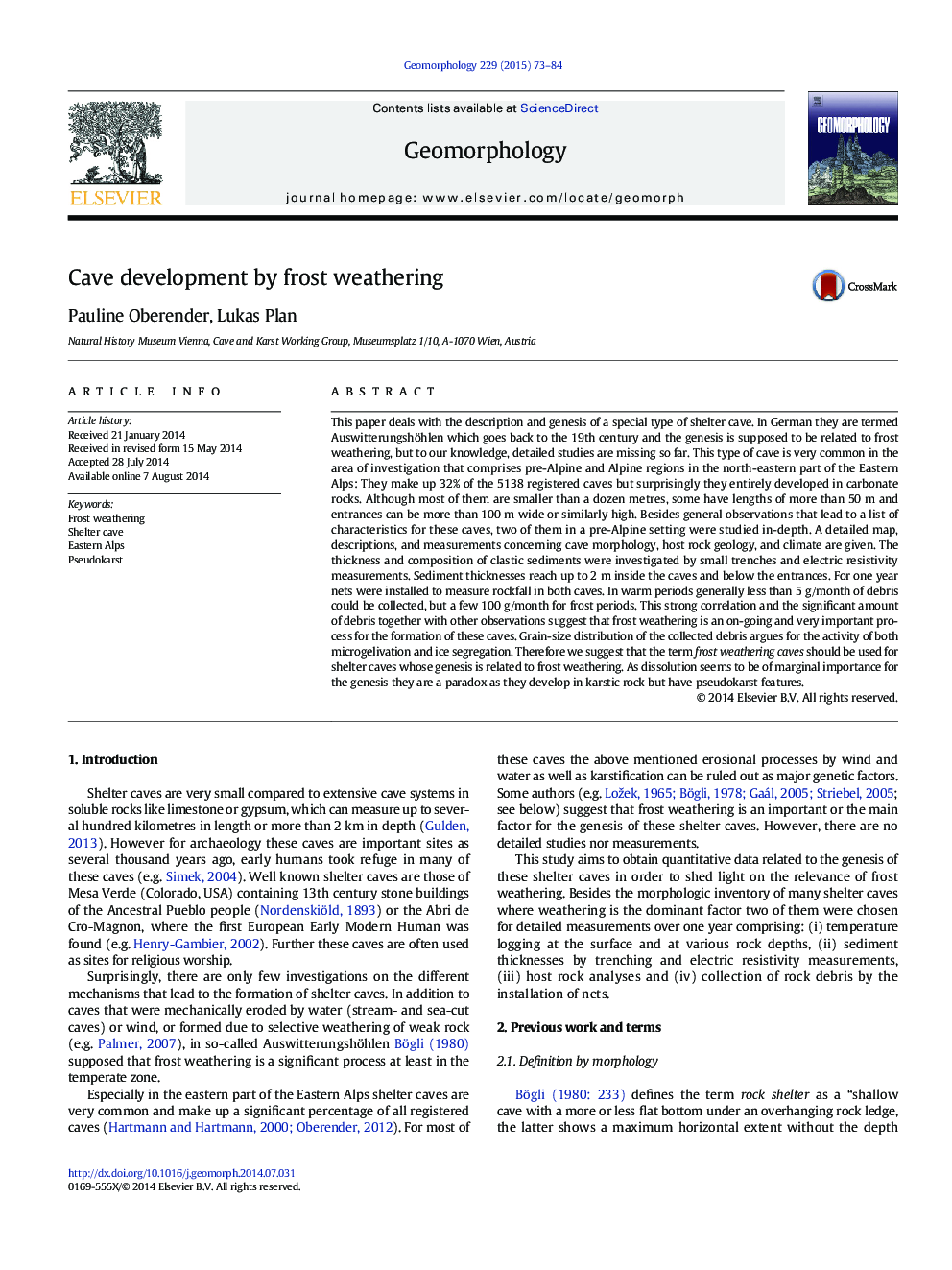| Article ID | Journal | Published Year | Pages | File Type |
|---|---|---|---|---|
| 6432362 | Geomorphology | 2015 | 12 Pages |
This paper deals with the description and genesis of a special type of shelter cave. In German they are termed Auswitterungshöhlen which goes back to the 19th century and the genesis is supposed to be related to frost weathering, but to our knowledge, detailed studies are missing so far. This type of cave is very common in the area of investigation that comprises pre-Alpine and Alpine regions in the north-eastern part of the Eastern Alps: They make up 32% of the 5138 registered caves but surprisingly they entirely developed in carbonate rocks. Although most of them are smaller than a dozen metres, some have lengths of more than 50Â m and entrances can be more than 100Â m wide or similarly high. Besides general observations that lead to a list of characteristics for these caves, two of them in a pre-Alpine setting were studied in-depth. A detailed map, descriptions, and measurements concerning cave morphology, host rock geology, and climate are given. The thickness and composition of clastic sediments were investigated by small trenches and electric resistivity measurements. Sediment thicknesses reach up to 2Â m inside the caves and below the entrances. For one year nets were installed to measure rockfall in both caves. In warm periods generally less than 5Â g/month of debris could be collected, but a few 100Â g/month for frost periods. This strong correlation and the significant amount of debris together with other observations suggest that frost weathering is an on-going and very important process for the formation of these caves. Grain-size distribution of the collected debris argues for the activity of both microgelivation and ice segregation. Therefore we suggest that the term frost weathering caves should be used for shelter caves whose genesis is related to frost weathering. As dissolution seems to be of marginal importance for the genesis they are a paradox as they develop in karstic rock but have pseudokarst features.
